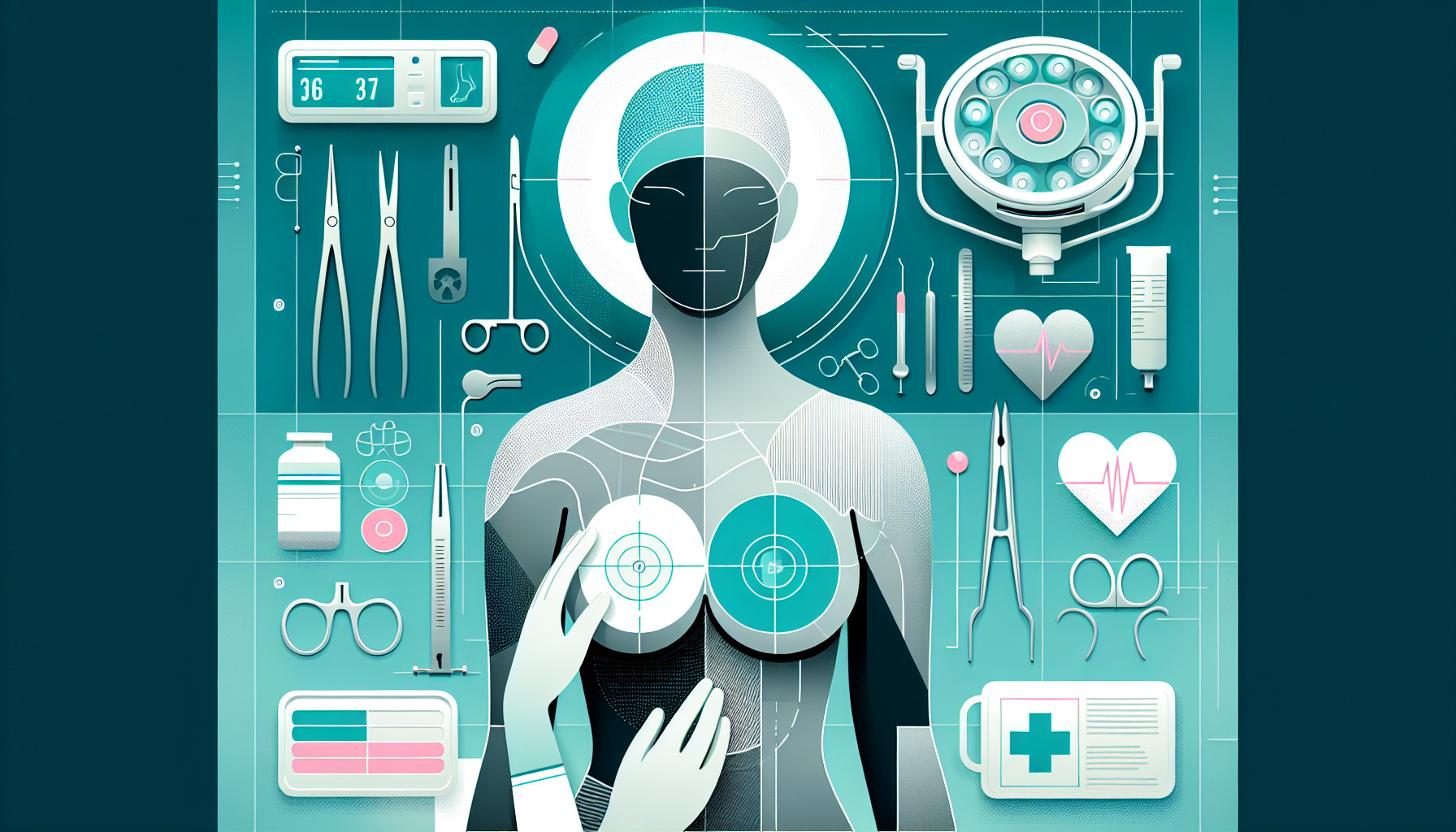Our Summary
This paper explores a type of breast reconstruction surgery that happens at the same time as breast cancer removal. Researchers looked at when this surgery is appropriate, how it’s done, and the results. They found that this procedure is suitable for women with small to medium sized breasts that don’t sag, and who haven’t had or need radiation therapy. To be a candidate, the patient also needs to have healthy skin flaps after the cancer is removed.
Different types of implants are used depending on whether the breasts sag or not. A material called acellular dermal matrix (ADM) can be used to cover the implant, which can help reduce pain after surgery.
There are some risks with this procedure, such as tissue death, needing more surgery, or the implant being lost. These risks are higher than with a two-stage breast reconstruction. However, benefits include no need for a second surgery, quicker recovery, and better quality of life.
The research concludes that this type of reconstruction has good results and patients are generally satisfied. Using ADM has helped make this procedure more common. The risks can be managed by carefully choosing suitable patients.
FAQs
- Who is a suitable candidate for the immediate breast reconstruction surgery?
- What is acellular dermal matrix (ADM) and how does it benefit the patient?
- What are the risks and benefits of this type of breast reconstruction surgery?
Doctor’s Tip
A doctor might tell a patient considering breast reconstruction that it is important to carefully weigh the risks and benefits of the procedure based on their individual situation. They may advise the patient to ask questions and seek a second opinion if needed. It’s also important for patients to follow post-operative care instructions to ensure the best possible outcome.
Suitable For
Overall, patients who are typically recommended for this type of breast reconstruction surgery are those with small to medium sized breasts that do not sag, who have healthy skin flaps after cancer removal, and do not need or have had radiation therapy. It is important for patients to be suitable candidates for the procedure in order to minimize risks and ensure successful results.
Timeline
Before breast reconstruction:
- Patient is diagnosed with breast cancer and discusses treatment options with their medical team.
- Patient undergoes surgery to remove the cancerous breast tissue.
- Patient considers options for breast reconstruction, including timing and type of surgery.
- Patient consults with a plastic surgeon to discuss the best approach for their individual case.
After breast reconstruction:
- Patient undergoes breast reconstruction surgery at the same time as their cancer removal surgery.
- Patient may experience some pain and discomfort following surgery, but this can be managed with medication.
- Patient may need to take time off work or other activities to recover from surgery.
- Patient attends follow-up appointments with their medical team to monitor healing and address any concerns.
- Patient may need additional procedures or touch-ups to achieve desired results.
- Patient ultimately experiences improved quality of life and satisfaction with their appearance following breast reconstruction.
What to Ask Your Doctor
- Am I a suitable candidate for immediate breast reconstruction at the same time as my breast cancer removal surgery?
- What type of implant will be used for my reconstruction, and why is this the best option for me?
- Will acellular dermal matrix (ADM) be used during my surgery, and how will this benefit my recovery process?
- What are the potential risks and complications associated with this type of breast reconstruction surgery?
- How long is the recovery process expected to be, and what can I do to help ensure a successful outcome?
- Will I need any additional surgeries or procedures following the initial reconstruction surgery?
- What are the expected results of this type of breast reconstruction, and what is the likelihood of being satisfied with the outcome?
- How will my breast sensation and appearance be impacted by this type of reconstruction surgery?
- Are there any specific lifestyle changes or precautions I should take following the surgery to ensure the best results?
- Are there any alternative options for breast reconstruction that may be more suitable for my specific situation?
Reference
Authors: Bertozzi N, Pesce M, Santi P, Raposio E. Journal: Biomed Res Int. 2017;2017:6486859. doi: 10.1155/2017/6486859. Epub 2017 Oct 2. PMID: 29098159
